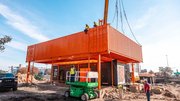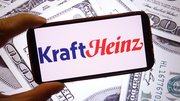News
Starbucks intros new global store-design strategy
June 24, 2009
SEATTLE — Starbucks Coffee Company has announced its new global store design strategy in its effort to set the stage for a reinvigorated customer experience. Inspired by Starbucks Shared Planet, the company's ongoing commitment to ethical sourcing, environmental stewardship and community involvement, the new designs will reflect the character of each store's surrounding neighborhood and help to reduce environmental impacts, the company said in a news release.
As company-operated stores are built and renovated, Starbucks will source materials and employ craftsmen on a localized basis, and will incorporate reused and recycled elements where possible. Starbucks says it aims to achieve LEED certification for all new company-operated stores beginning in 2010. Additionally, Starbucks will provide licensed stores and other business partners with design plans and guidance on construction.
"We recognize the importance of continuously evolving with our customers' interests, lifestyles and values in order to stay relevant over the long term," said Arthur Rubinfeld, president, Starbucks Global Development. "Our new design approach will allow customers to feel truly at home when visiting their local store and give them opportunities for discovery at our other locations around the world."
The new store designs, although built and redesigned to reflect localized markets, will share several core characteristics:
- Celebration of local materials and craftsmanship;
- Focus on reused and recycled elements;
- Exposure of structural integrity and authentic roots;
- Elevation of coffee and removal of unnecessary distractions;
- Storytelling and customer engagement through all five senses; and
- Flexibility to meet the needs of many customer types
Starbucks new store design strategy also aligns with specific long-term goals related to energy and water conservation, recycling and green construction:
- Derive 50 percent of the energy used in company-operated stores from renewable sources by 2010;
- Reduce greenhouse gas emissions by making company-operated stores 25 percent more energy efficient by 2010;
- Achieve LEED certification for all new company-operated stores worldwide by late 2010;
- Ensure 100 percent of cup supply will be reusable or recyclable by 2015; and
- Make recycling available in company-operated stores where Starbucks controls waste collection by 2015.
Starbucks recently completed construction on three stores that exhibit the company's new design strategy.
The first location opened in March 2009 on 1st Avenue & Pike Street in Seattle, located near Pike Place Market and just blocks away from the original Starbucks store.
The columns, floor and ceiling were preserved from existing buildings; the wood in the cabinets was repurposed from fallen trees in the Seattle area; the leather on the face of the bar is scrap leather obtained from shoe and automobile factories; and the community table came from a local restaurant.
The Paris Disney Village store, which opened in mid-June 2009, reflects the local culture and takes a storybook approach with educational and large-scale items that encourage parent-child interaction. The wooden cladding on the bulkhead is made from reclaimed Champagne racks; the countertop is made from a material containing recycled mobile phone parts; the walk-off entrance mats were made with recycled rubber from French aircraft tires; and the ventilation system utilizes natural convection-exhaust heat that rises through a titanium-paneled tower, significantly reducing energy use.
In late June, Starbucks will reopen a renovated store in Seattle's University Village.
The countertop bar contains 85 percent recycled content; the douglas fir in the wall fixtures and cabinets was reclaimed from school bleachers; the information piece on the bar utilizes recycled slate from a local school; and the redwood siding on the store's exterior was reclaimed from hop vine poles in Eastern Washington.
All three stores are registered to be LEED certified.
Over the course of the next year, Starbucks says it will replace incandescent light bulbs inside its stores with LED bulbs as part of a global retrofit program which will result in energy efficiencies and cost savings. The company also is placing plaques throughout its new and renovated stores to explain specific green design and construction elements.












